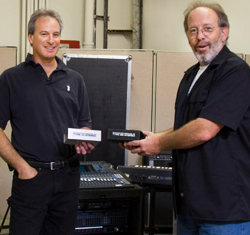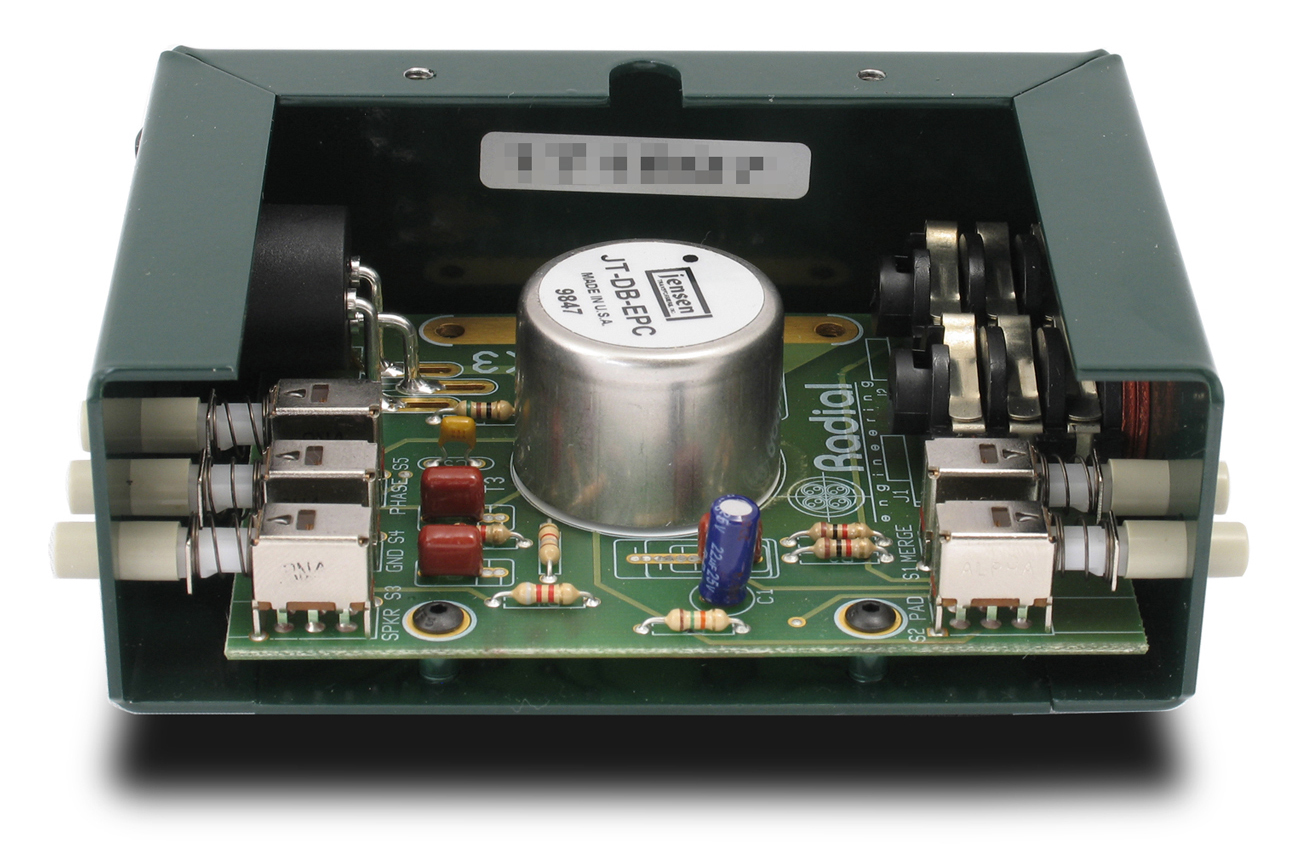
Going The Distance
An instrument-level signal going through an unbalanced 1/4-inch guitar cable is only going to travel a few feet before the capacitance of the cable will roll off some of the high frequencies.
For a typical performing-length cable, this can be part of the desired sound when connected to a nearby amp. However, taking that lower level signal all the way to the console while unbalanced would undo the tone of the instrument, and open it up to induced electrical noises as it travels by various other cables carrying AC and other signals.
A DI box converts the unbalanced signal to a balanced one right at the stage, so that it can be more resistant to interference as it travels the sometimes hundreds of feet back to the console inputs.
Along with the balanced XLR output that takes the signal to the analog snake (or digital converter box at the side of the stage) and out to the sound reinforcement system, DIs will usually have an additional unbalanced jack that loops the unadulterated instrument signal to the performer’s on-stage amplifier, so that the guitar or bass amp “sees” the instrument’s pickups. Thus the DI can also function as a signal splitter.
In addition to filling their functions of signal balancing, correcting impedance mismatches, and breaking ground loops, DI’s are audio devices that are inserted directly in the path between the transducer capturing the audio source and the mixing and amplification components of the sound reinforcement system. The quality and transparency of the signal they output is critical to how the listener will hear the sound of the instrument.
The key component in a passive DI is the transformer, and its design and quality is an important differentiator between a passable and a high-performance professional unit. This choice can have audible results. Companies such as Lundahl and Jensen specialize in manufacturing transformers with excellent audio characteristics – and with prices to match.
The quality of the circuitry within an active DI is also a critical factor in its audio response characteristics, as well as being a differentiator of the higher-quality boxes. Key measures are frequency response and flatness across the audio spectrum.
Road Ready
Because DI boxes are distributed around the stage in unprotected locations, they’re usually ruggedly built devices, often weighing a pound or two, though a few more diminutive (yet still rugged) units can also be had.
Connectors and switches are typically recessed within an extruded chassis, with perhaps 1/8-inch-thick metal surrounding the more heavy-duty units. Some models also include thick rubber side bumpers that function as non-slide feet while offering some protection to switches and attached cable connectors.
Internal durability is also a factor. The quality of the switches, connectors, electronic components, and circuit boards directly affect how well the DI performs its functions, how long it lasts, and its immunity to induced noise. In most cases you get what you pay for, and since the cost of even a relatively expensive DI is inconsequential compared to the price of a good instrument or mixing console, investing in quality is wise.
Gary Parks is a pro audio writer who has worked in the industry for more than 25 years, including serving as marketing manager and wireless product manager for Clear-Com, handling RF planning software sales with EDX Wireless, and managing loudspeaker and wireless product management at Electro-Voice.

